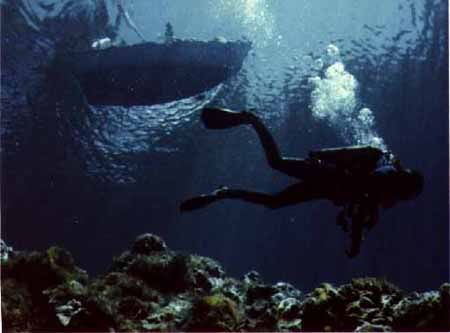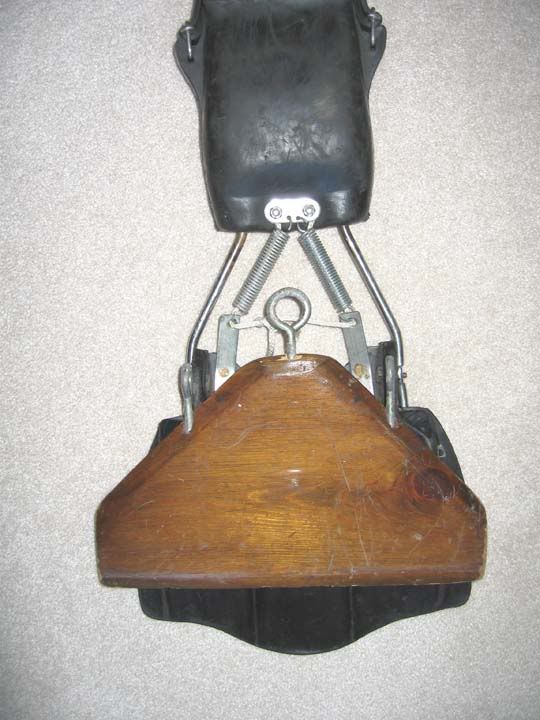You are using an out of date browser. It may not display this or other websites correctly.
You should upgrade or use an alternative browser.
You should upgrade or use an alternative browser.
Jet Fins A short US history
- Thread starter Sam Miller III
- Start date
Please register or login
Welcome to ScubaBoard, the world's largest scuba diving community. Registration is not required to read the forums, but we encourage you to join. Joining has its benefits and enables you to participate in the discussions.
Benefits of registering include
- Ability to post and comment on topics and discussions.
- A Free photo gallery to share your dive photos with the world.
- You can make this box go away
Here is a thought, and I am only throwing this for discussion. I don’t have much opinion about fin dynamics… I just like Jet Fins.
The slots themselves may not do much, but perhaps they provide some separation between the front and the back surface of the fins.
Just like a wing has some thickness (not just for structural reasons), putting the slots on the Jets in essence provides a top and bottom surface that have shapes that are independent from each other.
In the Jets the top and bottom skins overlap a long way. To see daylight you have to look down the slots. That is not the case with the Rockets and some of the other poor imitation. When you set a pair of Rocket fins on the ground you can see the surface below them through the slots.
Perhaps the flow inside the slots is not what is important. The slots just provides the structure for the two skins.
I just know that I like how they perform.
The mold on the Jets is far more complex than in some of the imitations. The round holes I believe are just to assist in the molding process.
BTW John, I think that the patent on the Jets expired about 25 years ago. I imagine, that is why the OMS are exact duplicates of the Jets, just in different material.
The slots themselves may not do much, but perhaps they provide some separation between the front and the back surface of the fins.
Just like a wing has some thickness (not just for structural reasons), putting the slots on the Jets in essence provides a top and bottom surface that have shapes that are independent from each other.
In the Jets the top and bottom skins overlap a long way. To see daylight you have to look down the slots. That is not the case with the Rockets and some of the other poor imitation. When you set a pair of Rocket fins on the ground you can see the surface below them through the slots.
Perhaps the flow inside the slots is not what is important. The slots just provides the structure for the two skins.
I just know that I like how they perform.
The mold on the Jets is far more complex than in some of the imitations. The round holes I believe are just to assist in the molding process.
BTW John, I think that the patent on the Jets expired about 25 years ago. I imagine, that is why the OMS are exact duplicates of the Jets, just in different material.
Luis,
Somewhere in my "stuff" around here I have the original Jet Fin patent, and I'm pretty sure that the overlapping blades was a part of that patent. The original molds for the Rocket fins, and probably some others, were made when that patent was still in effect. They really are "vintage" fins. Reminding me that the Jet Fin patent expired about 25 years ago was not nice
Here's a photo I took in the 1980s of a pair of Jet Fins in use:

Clear Lake in the Oregon Cascade Mountains east of Eugene, Oregon
Photo Copyright 1989 by John C. Ratliff
Unless the fins cup like the Duck Feet and my scoop fin, the slots/holes/overlapping blades do serve a function of allowing the water to go through the blade instead of around it in the dead area. One of the Jet Fin's claims was that there was more propulsion from this action, as the water was angled backward (Nemrod's thoughts notwithstanding).
There were other attempts to use the "wing" concept, and I used it too, with the SeaFin. It was another example of marketing getting in the way of a good concept. When it came out, it simply swiveled without the sprinds (which I added). I also experimented with a "wing" that was more in line with the original patent on the concept. This fin had several things going against it:
--It had no ability to absorb the "shock" of the switch of the wing.
--There was no spring mechanism (I added it myself).
--The angle was not right for a diver, and patterned after a person who had never had fins on. --The angle was too steep, almost 40 degrees (my ankles are flexible enough that I don't need a bend in the fin). So I straightened them out.
I had to build the wooden wing and put it in myself. The original concept allowed the leading edge of the wing to go up into "new" water, unaffected by the diver's foot. That was something no other fin had at the time. Had the SeaFin been built to the patent's specifications, it would have been a pretty good fin (if it had the spring). But without the springs, and with the "wing" totally ruined by the marketing personnel (speculation on my part), it was doomed.


SeaRat
Somewhere in my "stuff" around here I have the original Jet Fin patent, and I'm pretty sure that the overlapping blades was a part of that patent. The original molds for the Rocket fins, and probably some others, were made when that patent was still in effect. They really are "vintage" fins. Reminding me that the Jet Fin patent expired about 25 years ago was not nice
Here's a photo I took in the 1980s of a pair of Jet Fins in use:

Clear Lake in the Oregon Cascade Mountains east of Eugene, Oregon
Photo Copyright 1989 by John C. Ratliff
Unless the fins cup like the Duck Feet and my scoop fin, the slots/holes/overlapping blades do serve a function of allowing the water to go through the blade instead of around it in the dead area. One of the Jet Fin's claims was that there was more propulsion from this action, as the water was angled backward (Nemrod's thoughts notwithstanding).
There were other attempts to use the "wing" concept, and I used it too, with the SeaFin. It was another example of marketing getting in the way of a good concept. When it came out, it simply swiveled without the sprinds (which I added). I also experimented with a "wing" that was more in line with the original patent on the concept. This fin had several things going against it:
--It had no ability to absorb the "shock" of the switch of the wing.
--There was no spring mechanism (I added it myself).
--The angle was not right for a diver, and patterned after a person who had never had fins on. --The angle was too steep, almost 40 degrees (my ankles are flexible enough that I don't need a bend in the fin). So I straightened them out.
I had to build the wooden wing and put it in myself. The original concept allowed the leading edge of the wing to go up into "new" water, unaffected by the diver's foot. That was something no other fin had at the time. Had the SeaFin been built to the patent's specifications, it would have been a pretty good fin (if it had the spring). But without the springs, and with the "wing" totally ruined by the marketing personnel (speculation on my part), it was doomed.


SeaRat
Last edited:
Texfrazer
Guest
WOW!
I've never even heard of that design John. Thanks for sharing!
I've never even heard of that design John. Thanks for sharing!
Similar threads
- Replies
- 13
- Views
- 2,214
- Replies
- 33
- Views
- 4,660
- Replies
- 0
- Views
- 129
- Replies
- 12
- Views
- 1,841



